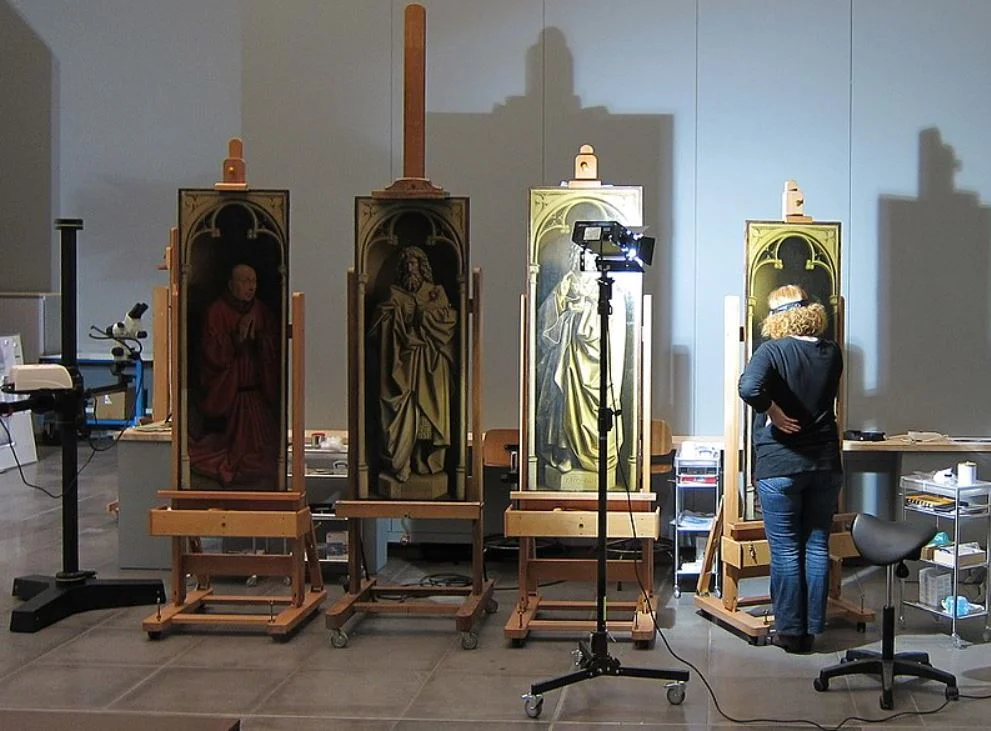Very few paintings in the history of Western art have had an impact as the one located in a cathedral in the Belgian city of Ghent.
Let’s take a closer look at some of the most interesting facts about the Ghent Altarpiece, one of the masterpieces in the oeuvre of Early Netherlandish painters Hubert and Jan van Eyck.
1. It’s in the same location as it was originally commissioned for
The Ghent Altarpiece is a monumental work of art that was originally commissioned to decorate the chapel of Saint Bavo’s Cathedral in Ghent, Belgium. Ghent is one of the biggest cities in the country and has been historically an important city in Europe, especially during the late Middle Ages.
This amazing Gothic Cathedral was built between 1274 and the final expansion phases of the 16th century. The spire reaches a height of 89 meters (292 feet) which makes the church one of the most prominent landmarks in the city.

2. It has been the victim of 13 crimes and 7 thefts
One of the most amazing facts about the Ghent Altarpiece is that it has been referred to as “the most stolen painting in the world,” and honestly, it didn’t steal this nickname!
The painting has been the victim of 13 crimes of which 7 included theft. The most notable of these thefts happened shortly after the French Revolution after which the painting was moved to the Louvre Museum before being brought back to Ghent following the final defeat of Napoleon in 1815.
Another notable event was the fact that Belgium, Germany, and France reached an agreement to keep the painting safe for the duration of World War II. It ended up being stored in a museum in Pau, southern France after it failed to reach Vatican City following Italy’s declaration of war.
Hitler broke this agreement in 1942 and it eventually ended up at the Neuschwanstein Castle in Bavaria before being moved to the Altaussee salt mines alongside countless other famous works of art.
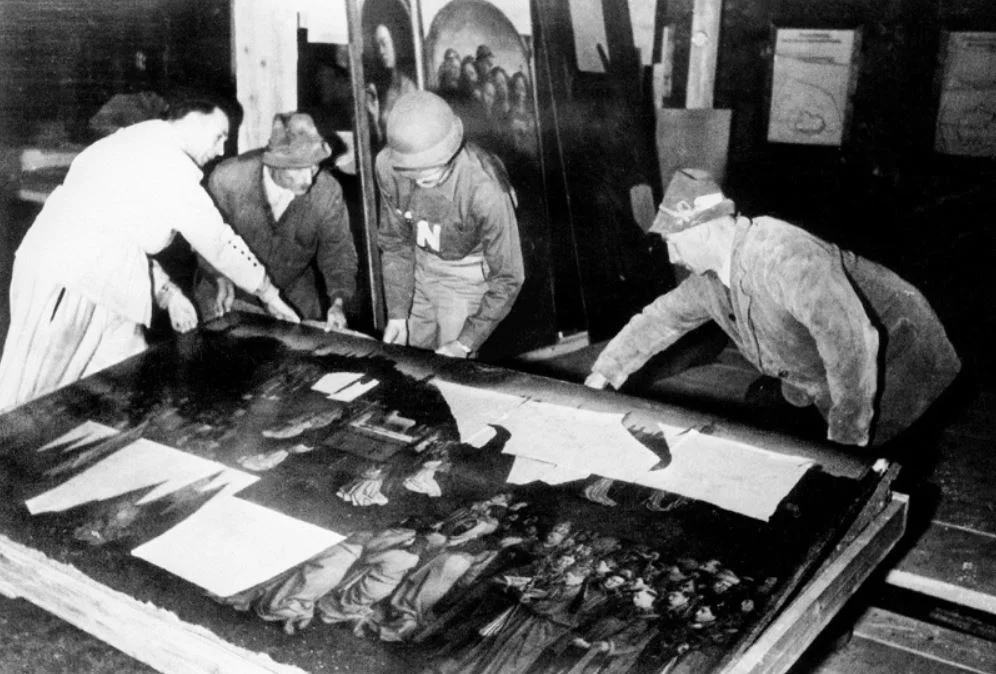
3. The painting goes by a couple of different names
This polyptych altarpiece (which means it consists of multiple panels) is officially known as the Ghent Altarpiece but has a couple of different names as well.

One of these is “Adoration of the Mystic Lamb” (or “Het Lam Gods” in Dutch), which is a reference to the central panel of the painting.
It’s also sometimes referred to as the “Polyptych of the Adoration of the Mystic Lamb,” a reference to the fact that it consists of multiple panels.
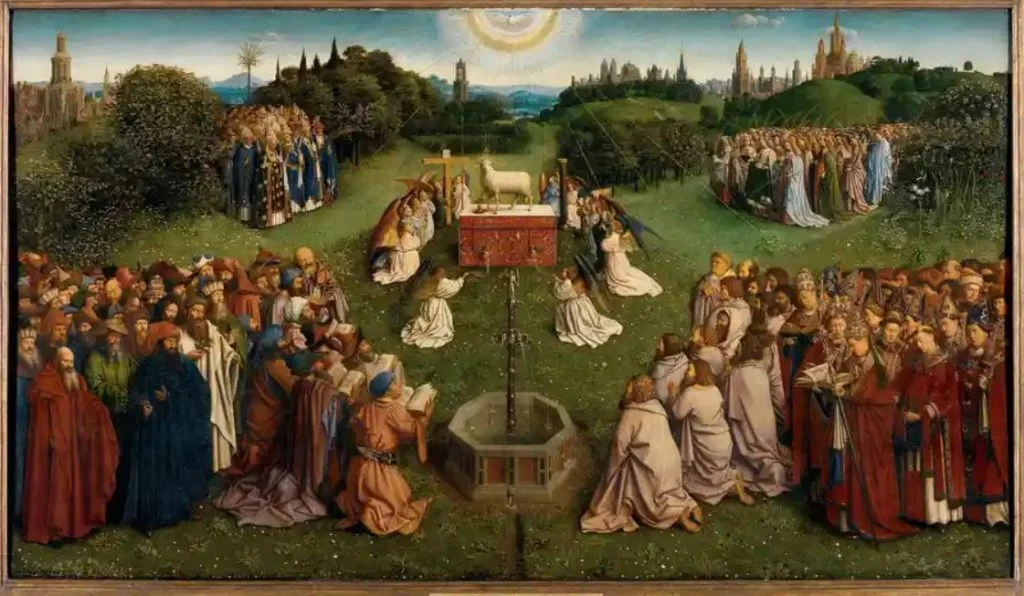
4. It was a collaboration between two famous brothers
One of the biggest mysteries about this fascinating painting is the fact that it remains unsure until today who actually painted the work. It was a collaboration between the brothers Hubert (1385-1426) and Jan van Eyck (1390-1441).
It’s also generally agreed that the older brother, Hubert, set up the panels of the work in the early 1420s and that he probably started to paint. following his death in 1426, his brother Jan van Eyck probably completed it, something that didn’t happen until the year 1432.
An inscription on the painting which has now been lost also stated that Hubert van Eyck, or “maior quo nemo repertus” (greater than anyone) started the work, and Jan van Eyck or “arte secundus” (second-best in the art), completed it.
Regardless of who painted which section, the work was officially inaugurated on May 6, 1432, as one of the greatest works of art ever created at that time.
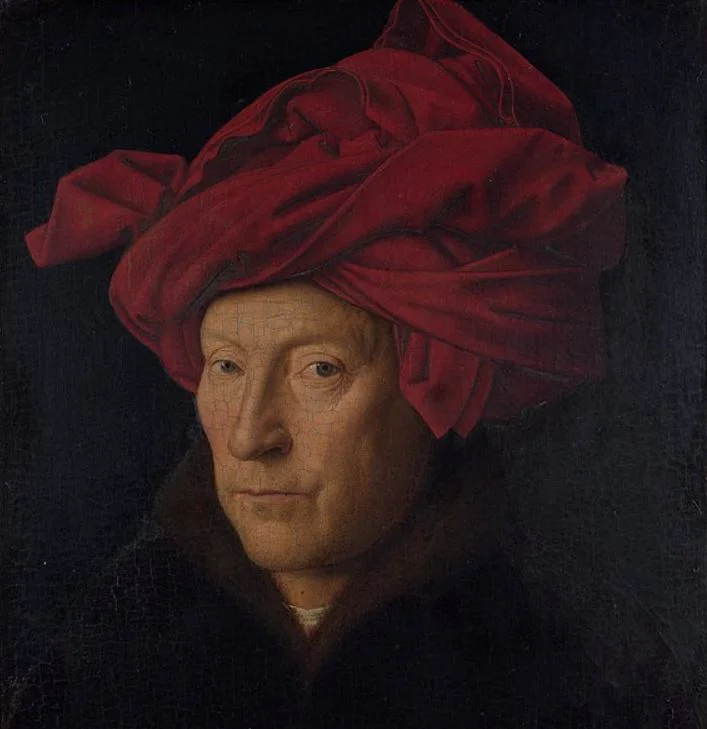
5. It’s considered to be a turning point in the world of Western art
The Ghent Altarpiece has often been cited as a major turning point in the world of Western art. It marks the transition between medieval art, which highly idolized figures without taking ideal proportions into account, to the representation of nature as it really is.
This way, it can be seen as one of the first works of Renaissance artists which became the prelude of a completely new way era of artists. Yes, this was both a revolutionary and influential painting in many ways!
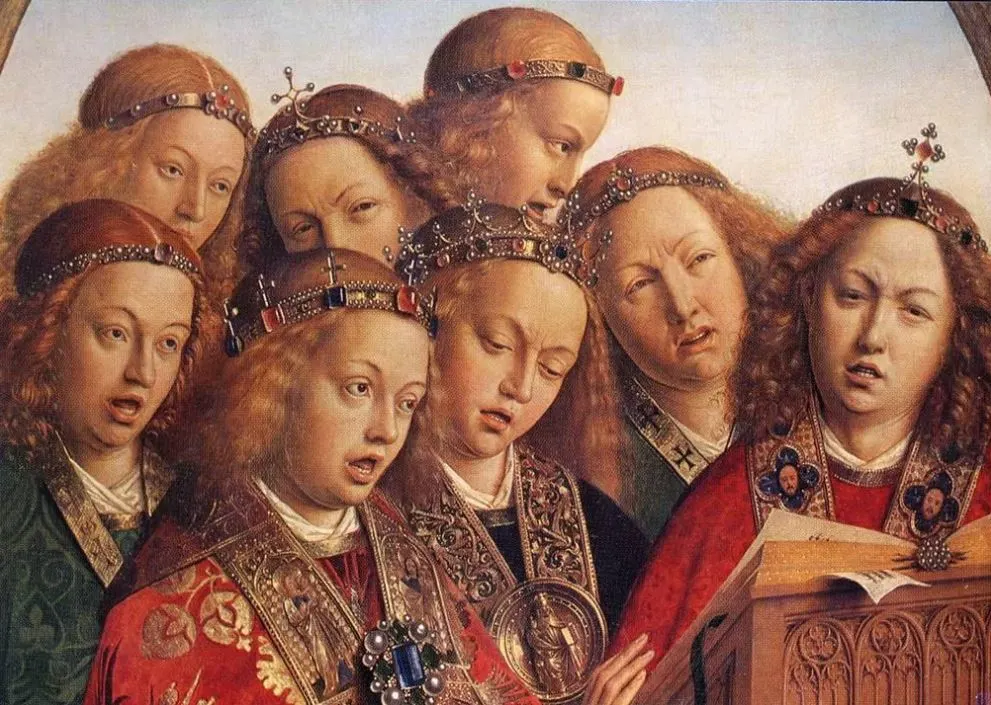
6. The painting is of a monumental scale and took a while to complete
One of the most amazing facts about the Ghent Altarpiece is that it was created on a monumental scale, most probably the reason why it took about 7 years to complete.
When the panels are closed, the painting has dimensions of 375 × 260 centimeters. When the panels are opened, the painting has dimensions of 340 × 460 centimeters (11 x 15 feet).
Yes, standing in front of this world treasure is a pretty remarkable experience!

7. The inner section has 12 panels and the closed section 8
The interior section of the painting features 12 panels which are divided into two registers. The upper register depicts the Deësis which represents the Virgin Mary, Jesus Christ or God, and John the Baptist.
The additional panels of the upper register feature angels singing and playing music, and the outer panels depict Adam and Eve. Especially the nudity of Adam and Eve is remarkable as it was the first form of human nude that was painted in a naturalistic manner.
This wasn’t to the liking of many visitors of the church and it offended people for multiple centuries to come.
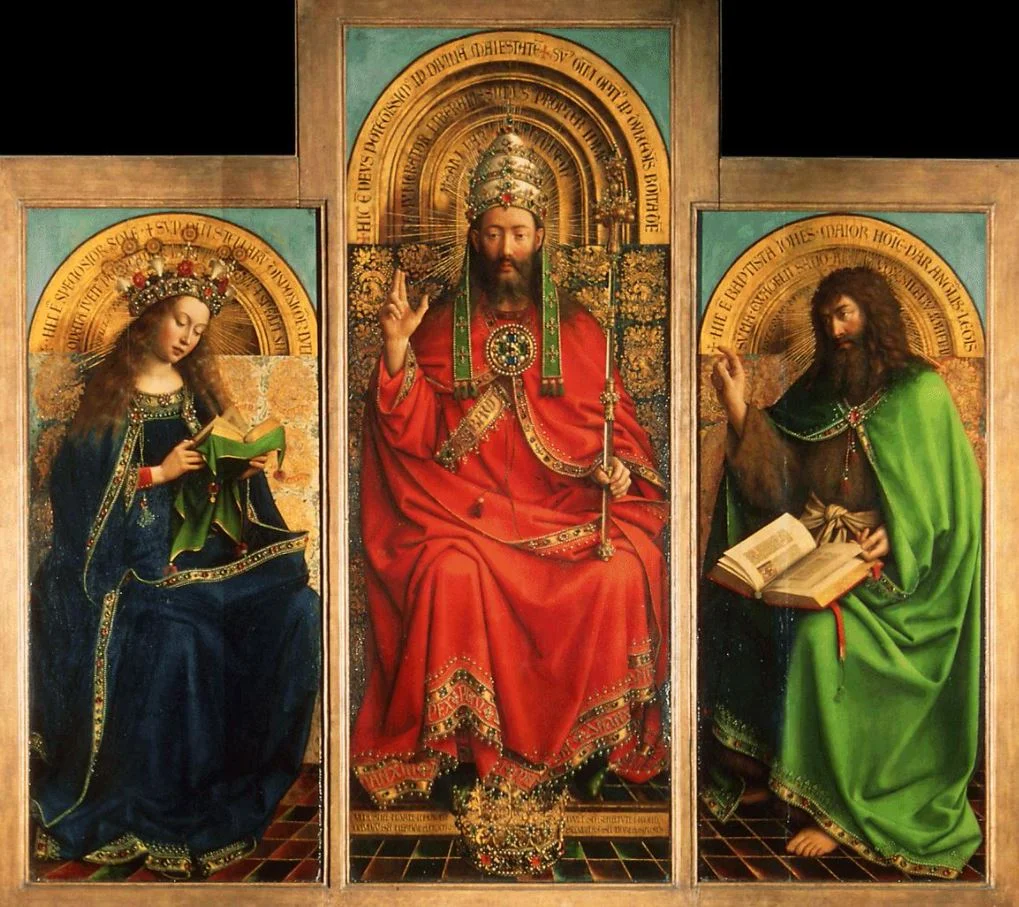
8. The focus of the painting depicts the adoration of the Lamb of God
The 5 panels of the lower register form a unified landscape centered around the main painting. This section is a remarkable painting by itself and has dimensions of 134.3 × 237.5 centimeters (4.4 x 7.79 feet).
The focal point of this panel is the Lamb of God which is surrounded by 14 angels and several other groups of people. The scene is depicted in a wonderful-looking meadow and the spires of Jerusalem are visible in the distance.
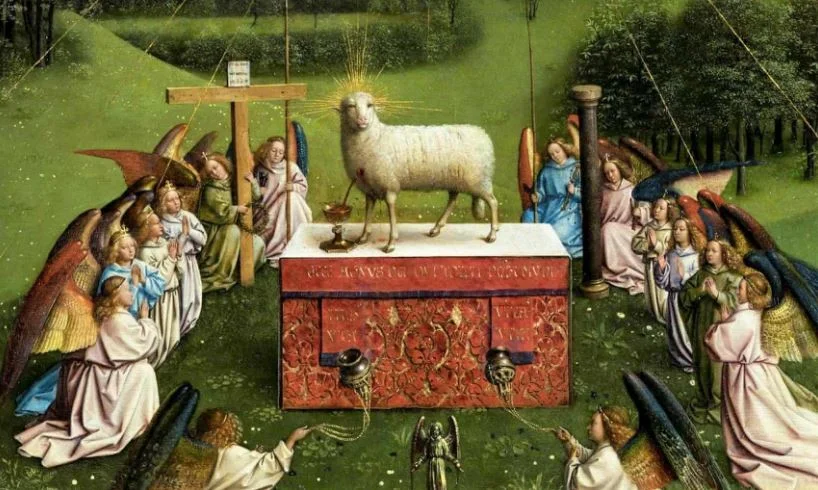
Below the lamb we can also see the “Fountain of Life” which has an inscription saying:
HIC EST FONS AQUE VITE PROCEDENS DE SEDE DEI + AGNI
This literally translates to: “This is the fountain of the water of life, proceeding out of the throne of God and the Lamb.”
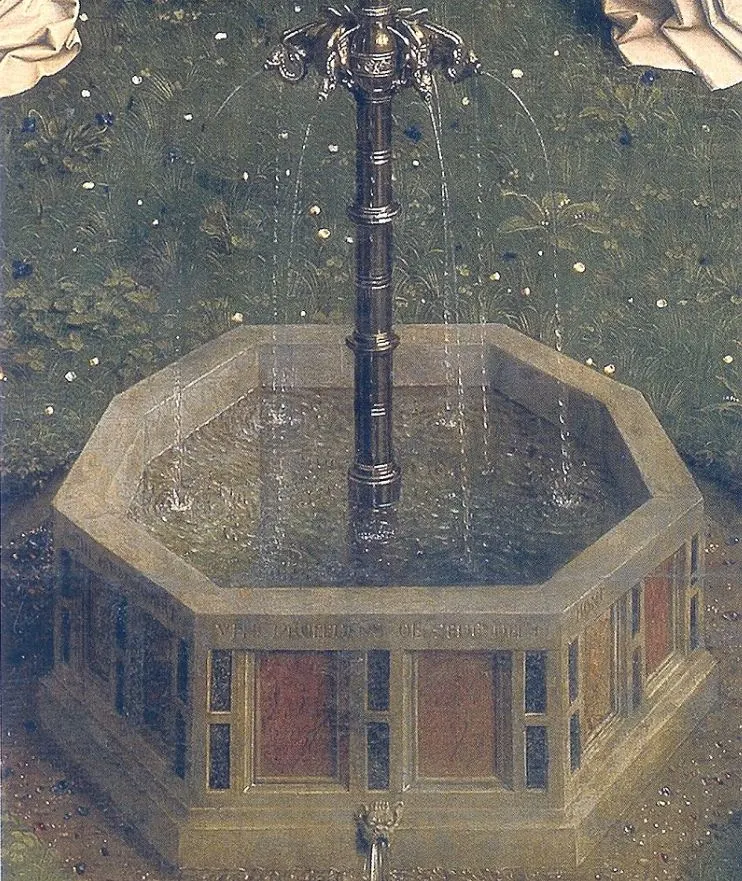
9. The couple who commissioned it is depicted as well
One of the most remarkable facts about the Ghent Altarpiece is that it was commissioned by a rich merchant who ended up becoming the mayor of Ghent. This man was named Jodocus Vijd and he came from a very powerful family in the city.
The city of Ghent was one of the most important cities in Europe in the early 15th century and he was able to amass a lot of wealth. One of the reasons he commissioned such an enormous work of art was to show off this wealth, while it was also intended to secure his position in Heaven.
Similar to how Jan van Eyck painted Chancellor Rolin together with the Madonna in the year 1435, this work depicts the man who commissioned it. Both Jodocus Vijd and his wife Lysbette Borluut are depicted on the closed panels.
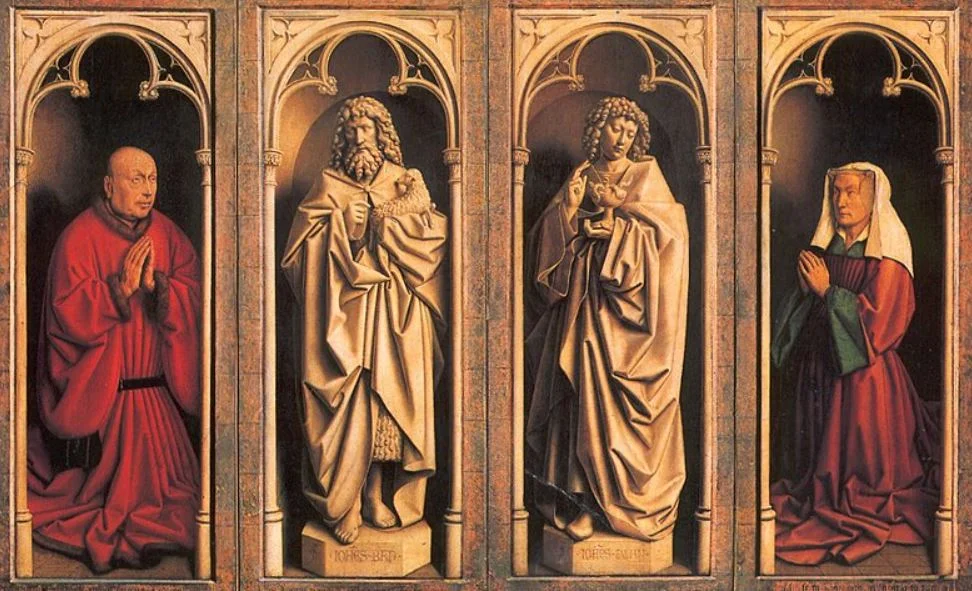
10. The use of lighting and the level of detail is astonishing
One of the most remarkable elements of this astounding painting is that was a revolutionary work regarding the use of lighting. It features numerous complex uses of lights that intertwine with the extraordinarily effective use of shadows.
These effects were achieved by a combination of using new oil techniques and transparent glazes. This allowed van Eyck to depict the figures as if the light source is coming from behind the painting.
If we take a closer look at the figures standing to the right of the Fountain of Life, we can also see the intricate level of detail used by the artist.
3 of these figures have been identified as being Pope Martin V (1369-1431), Pope Gregory VII (1326-1417), and Antipope Alexander V (1339-1410), people who lived around the time that the work was completed.
The fact that van Eyck included real people in the painting most probably added an extra dimension to the painting for the contemporary viewer.
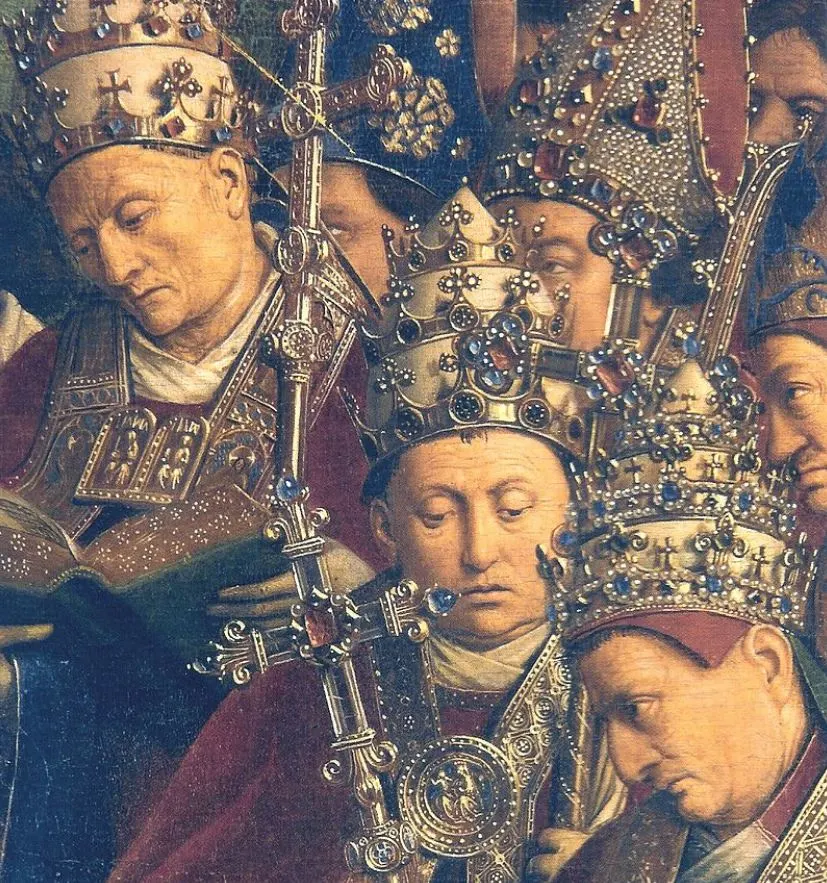
11. The first restoration was already conducted in the 16th century
One of the most fascinating facts about the Ghent Altarpiece is that the first restoration of the work already commenced the century following its completion. This initial restoration was completed in 1550 by Flemish painter Lancelot Blondeel and Durch painter Jan van Scorel.
Unfortunately, the highly decorative original frame of the painting has been lost to history as it was destroyed during the Reformation in the 16th century. This frame was carved and presumably featured hinges and an automated system for opening the panels, possibly even accompanied by music.

12. A thorough contemporary restoration was started in 2012
The painting has suffered quite a bit during its 6 centuries of existence, so the 16th-century restoration wasn’t the only time work had to be done to keep it in mint condition.
In the early 1950s, it had to be completely restored following its recovery from the salt mine in Austria during World War II. This was the first time that x-ray techniques were used as well.
In October of 2012, another major renovation project was started. This project cost a whopping €2.2 million and is being conducted at the Museum of Fine Arts in Ghent.
An interesting discovery was made during the initial phase of this project as it turned out that about 70% of the painting had been overpainted during the 16th century.
Regardless, the Ghent Altarpiece is one of the most fascinating works of art ever created and a must-see attraction when you visit the city of Ghent!
